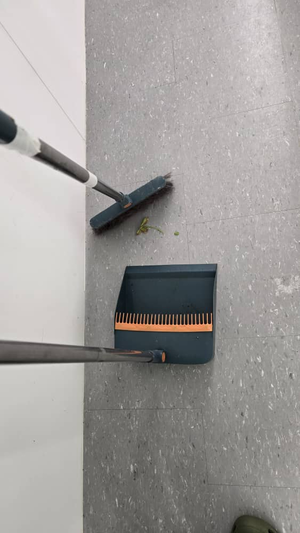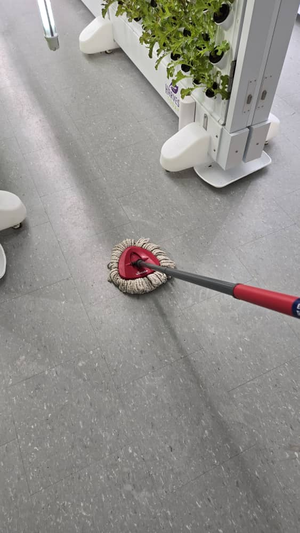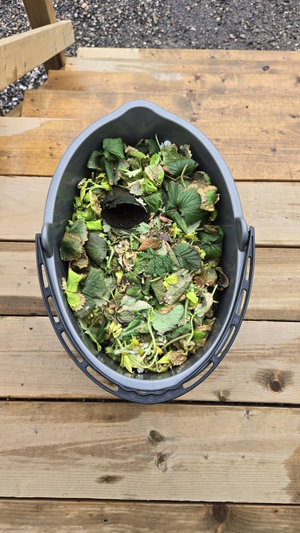Safety Training Requirements[edit | edit source]
- Dr. Pearce Safety Lab Tour
- Worker Health & Safety Awareness
- WHMIS 2015 - Workplace Hazardous Materials Information System
- Laboratory Safety & Hazardous Waste Management
Safety Issues With Method[edit | edit source]
Possibility of slips, trips and falls
- Watch the wet floors while walking to avoid tripping and falling hazard.
- Make sure plugs for growing lighting are off for the vertical wall under cleaning.
Personal protective equipment[edit | edit source]
PPE is to keep YOU safe so that you can keep doing what you want to do.
- Safety glasses – always required
- Lab Coat
- Boot covers
- gloves
SDS and other[edit | edit source]
We are not using any harsh chemicals for cleaning for Agrotunnel.
- Appropriate SDS sheets should be viewed online.
- We are using absolutely natural, safe and biodegradable cleaner.
Equipment Name[edit | edit source]
- Operating at ICFAR
- Agrotunnel
- Vertical grow walls
- Grow Lights
Light and Temperature Tolerances[edit | edit source]
- Growing space can not tolerate any external or secondary lights which can interfere with their growing needs
- Temperature mostly should remain constant to avoid conditions like stress and dehydration in plants
Operation & Procedure[edit | edit source]
1. Cleaning the Measuring Equipment[edit | edit source]
To ensure both safety and accuracy in future measurements, it is imperative to thoroughly sanitize the measuring equipment after each use with water.

2. Sanitization of slippers[edit | edit source]
Place a pair of slippers gently on the ground. Spray and sanitize the top surface of the slippers. Next, thoroughly wipe the slippers with paper towels. Examine the slippers for any potential dirty spots. If the slippers are properly cleaned, place them back on the clean shelf.

3. Floor Cleaning[edit | edit source]
Before exiting the lab, ensure that the floor is thoroughly cleaned. Conduct a comprehensive inspection of the entire Agrotunnel to identify all areas that require cleaning. Begin by sweeping all sections of the lab where dirt or other debris is present on the floor. Ensure that the entire lab is meticulously swept and free from dirt. Subsequently, mop the entire floor of the lab thoroughly to achieve a high standard of cleanliness and maintain proper hygiene.


4. Cleaning the empty ports[edit | edit source]
Procedure for Cleaning and Preparing Empty Ports on the Growing Wall
- Inspection: Carefully examine all empty ports on the growing wall for any signs of dirt or contamination.
- Cleaning:
- If a dirty port is identified, spray it with a solution consisting of equal parts vinegar and water.
- Wipe the sprayed port with a clean towel until all dirt and contaminants are removed.
- Preparation:
- After ensuring the port is thoroughly cleaned, place a cap over it to protect it from further contamination.
- The port is now prepared and ready for the next planting cycle.

5. Wall Sanitation[edit | edit source]
Remove all the caps from the reservoirs of each wall and examine the cleanliness of the reservoirs. Clean any reservoirs that are dirty.

To maintain optimal cleanliness, follow these steps to properly clean the reservoir:
- Use a vacuum to thoroughly clean the reservoir. Open the growing wall from the center, and carefully insert the vacuum head to the bottom of the wall under the water. Ensure to reach all corners to remove any dirt, soil, and coco coir particles.
- After vacuuming, prepare a solution of vinegar and water to clean the reservoir. This solution will help to sanitize the area effectively.
- Finally, wipe the water reservoir with a cloth to remove any remaining residue or particles that the vacuum and vinegar solution did not eliminate.
By following these steps, you can ensure a clean and well-maintained reservoir, promoting a healthier growing environment.
6. Disposing of compost[edit | edit source]
Collect the lab's compost waste daily in a designated bucket. It is essential to dispose of the compost at an approved location each day. The compost waste from the lab can be used as biomass for future fermentation and digestion processes.

7. Disposal of Waste and Recycling Bins[edit | edit source]
Procedure for Waste Disposal and Recycling Bin Maintenance
- Daily Monitoring: Inspect waste disposal and recycling bins daily to verify they are positioned in the designated locations.
- Replacement and Hygiene: Replace the waste disposal bags in the bins once every day to maintain optimal hygiene standards.
- Positioning: Ensure the bins are neatly placed in the designated corner.

Shutdown[edit | edit source]
After thoroughly cleaning the interior and exterior, reposition the growth walls and lighting fixtures to their correct locations.

